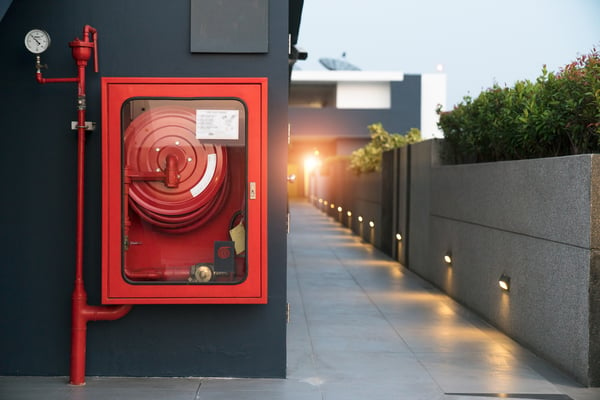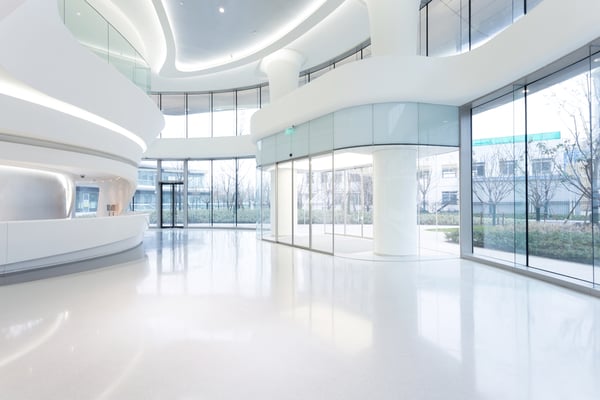Resilient Design: Emergency Conditions and Everyday Resilience

Resilient design involves creating a building that handles regular conditions, as well as natural or manmade disaster situations. In these cases, the building should maintain its structural integrity while protecting its occupants.
This article describes emergency resilience and everyday resilience. The first type describes techniques to counteract the effect of natural disasters and other emergencies. On the other hand, everyday resilience describes methods that extend the lifespan of buildings, considering day-to-day activities.
Make sure your building systems are designed to operate during emergencies.
Emergency Resilience
As mentioned before, resilient design must consider all the disaster scenarios to which a building will be exposed during its life cycle. The following are some of the most common emergency conditions.
Seismic Considerations
Earthquakes are among the most devastating natural disasters, and poorly constructed buildings suffer the worst consequences. However, seismic design has improved over the years. With new technologies and construction methods, buildings can withstand strong seismic activity.
Base isolation is one of the most popular seismic design methods, which consists of decoupling the base of a structure from the rest of the building. This configuration isolates base movement while the superstructure remains nearly static.
Expansion joints allow thermal expansion and contraction, which conserves structural integrity under different temperature conditions. However, expansion joints are also used in seismic design, allowing more movement without structural damage during seismic events. Expansion joint covers can be used to conceal gaps beneath the floor.
Extreme Weather
In hurricane- and flood-prone areas, buildings should be designed to resist high wind loads, heavy precipitation, and ground-level flooding. Some elements to consider in areas exposed to extreme weather include:
- Well-sealed building envelopes.
- High-quality drainage systems for roofs, basements, terraces and other areas that may collect water.
- Storm-resistant louvers in mechanical rooms, which allow air intake while blocking wind and precipitation.
- Flood barrier walls, to control flooding at ground levels.
- Installing backup generators and other important mechanical systems above the reach of floodwater, to keep them operational during emergencies.
Extreme Temperatures
With respect to extreme temperatures, the same strategies that achieve energy efficiency can improve building resilience when there is no access to electrical power. When there is no heating or cooling available, the building can keep suitable temperatures for a longer time if it has high R-value insulation, solar shading, natural ventilation and operable windows.
Fire Resistance

Fire is a major threat for all constructions, and building codes demand fire-resistant materials and proper escape methods. Additional measures can be used to protect buildings against urban and wildfire hazards, such as fire-resistant landscaping, brush-clearing, and barrier zones in wildfire prone areas.
Fire resistance features for buildings are complemented with active fire protection measures, such as automatic sprinkler systems.
Infrastructure Failure & Power Outages
The failure of basic infrastructure can be expected during natural disasters, and power outages and blackouts are a common occurrence. Therefore, building designers should always consider backup power systems, to keep the building functional and comfortable when electricity fails. The following are some recommendations to handle blackouts:
- Have a backup power supply that meets local codes
- Install backup power systems on higher floors, not basements where they can be flooded
- Consider a natural gas generator, since natural gas piping is very resilient and can continue operating during most emergencies. If you only use diesel, fuel deliveries may be interrupted during disaster events.
Energy efficiency measures improve the effectiveness of backup power systems, since the building can keep livable conditions with less energy.
- Insulation plays a key role in resilient design, making temperature control easier.
- Maximize daylight to reduce the electricity consumption of lighting fixtures.
- Include natural ventilation features, in case the HVAC system fails.
- Incorporate off-grid heating and cooling features.
Everyday Resilience
Resilient buildings should withstand natural disasters, but they also need to last through many years of constant use. According to the US Department of Energy, a commercial building will last 73 years on average. To make sure that buildings last many years, designers must enhance day-to-day durability with tight building envelopes and durable interior finishes.

Building Envelopes
A resilient and durable building must have proper air sealing and insulation, especially for windows, doors and roofs. The design should also consider moisture protection, including flashing, drainage, and moisture barriers.
Another important concept regarding building envelopes is explosion venting. This is often applied in power generation or industrial facilities, where there can be a rapid pressure release or explosion. These vents help release internal pressure when necessary, preventing damage.
Interior Finishes
Doors and other entryways experience the highest traffic and wear. Therefore, it is important to use durable materials for the doors and flooring in building accesses. Durable entrance floor systems such as tread rails and robust carpeting also help keep dirt, water and contaminants out of the building.
Although they get less traffic, interior doors also suffer wear from constant use. High-quality doors have a longer lifespan, while requiring less maintenance over time. Another way to make interiors more durable is by protecting walls with handrails, crash rails and corner guards. These features protect walls from bumping and scraping by moving objects.

Michael Tobias
Michael Tobias, the Founding Principal of NY Engineers, currently leads a team of 150+ MEP/FP engineers and has led over 4,000 projects in the US
Join 15,000+ Fellow Architects and Contractors
Get expert engineering tips straight to your inbox. Subscribe to the NY Engineers Blog below.

